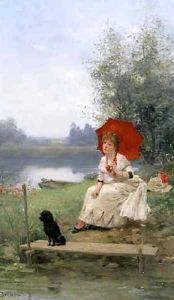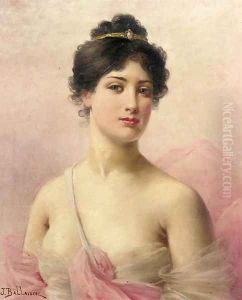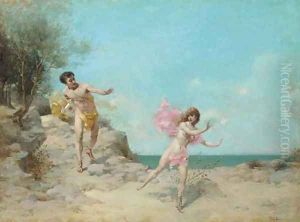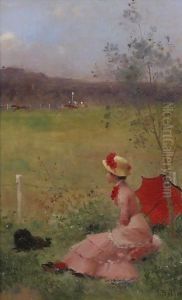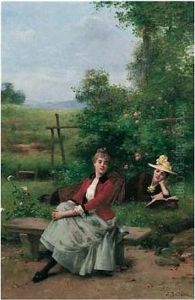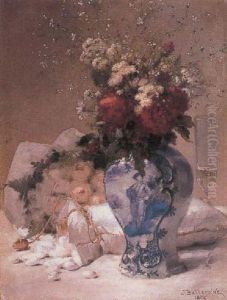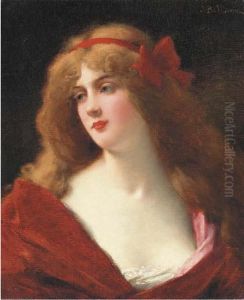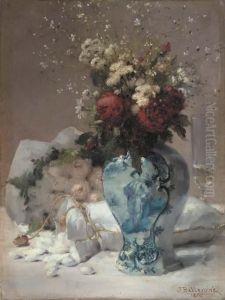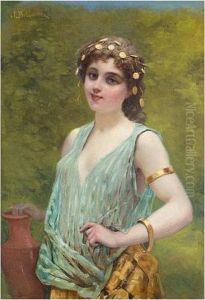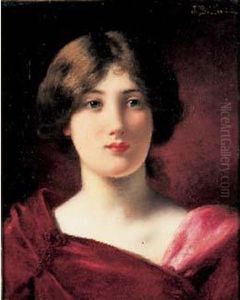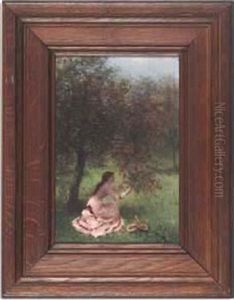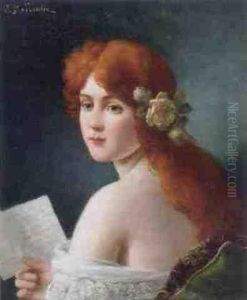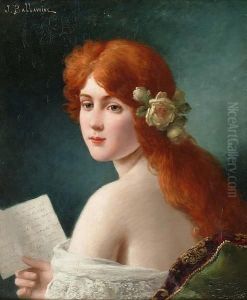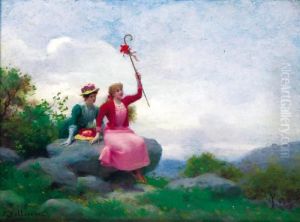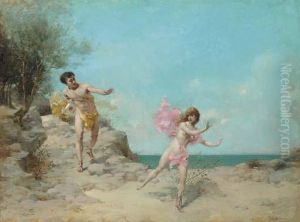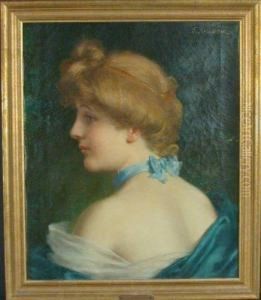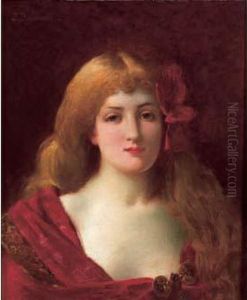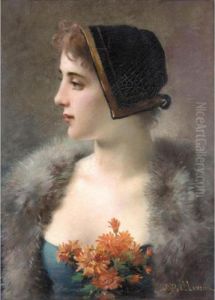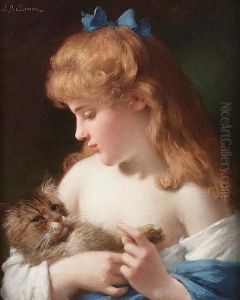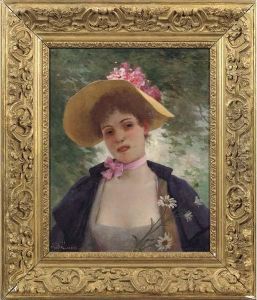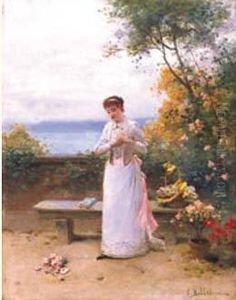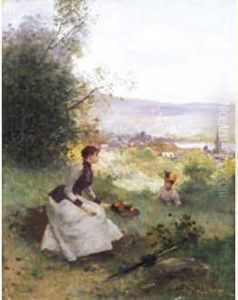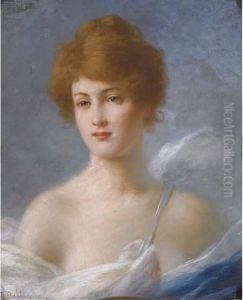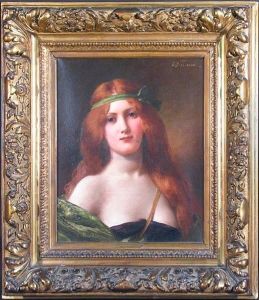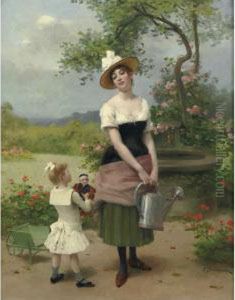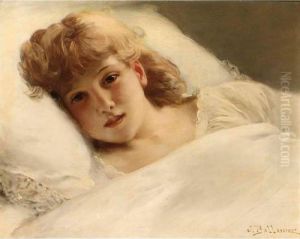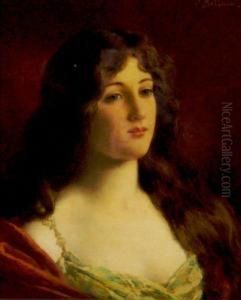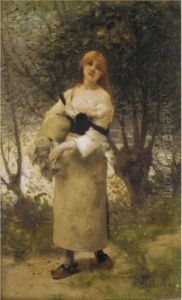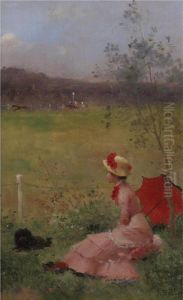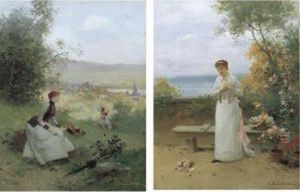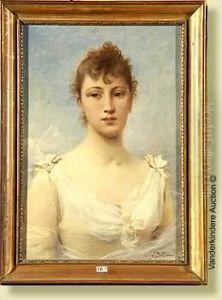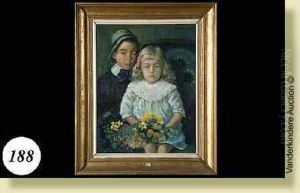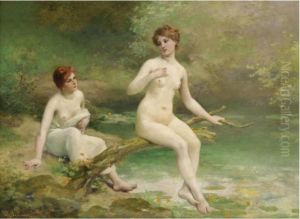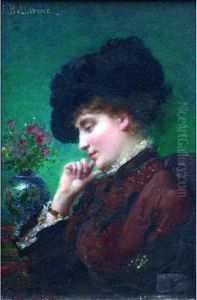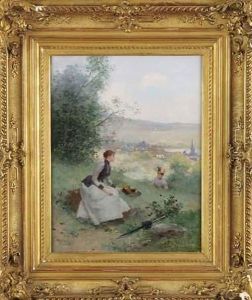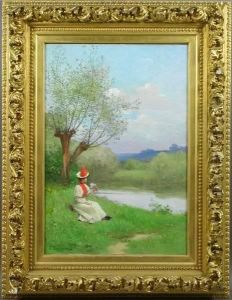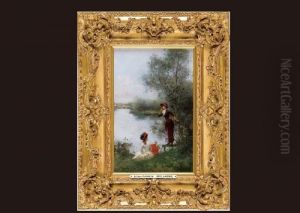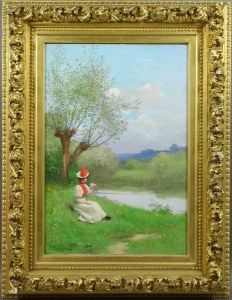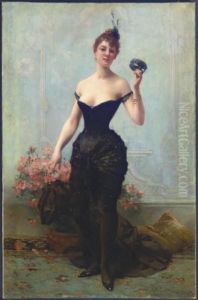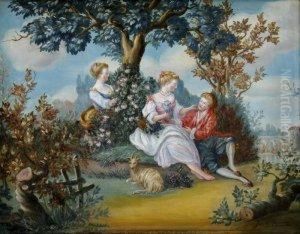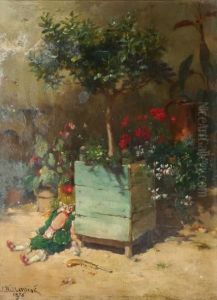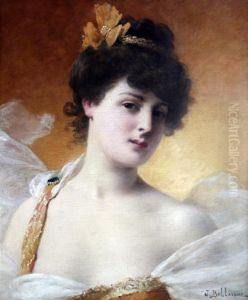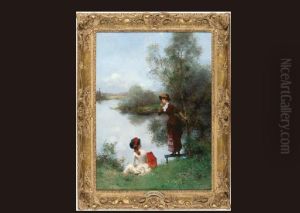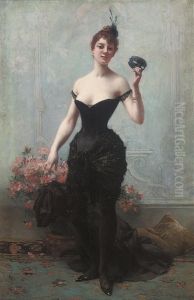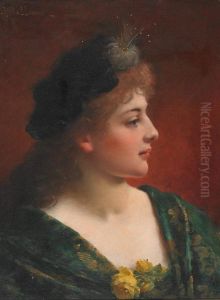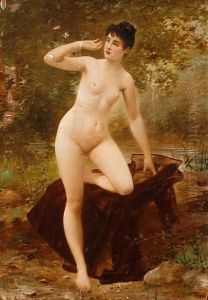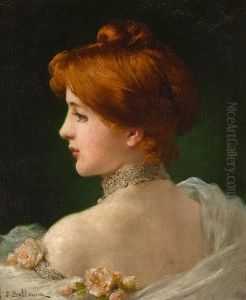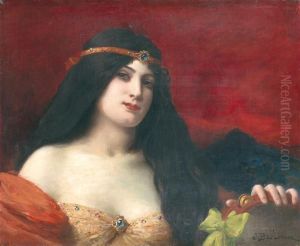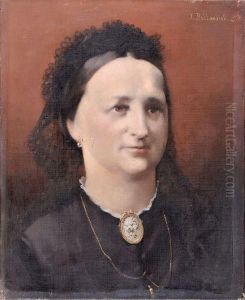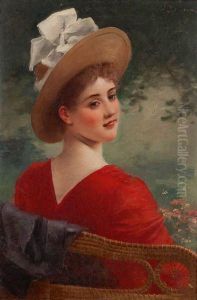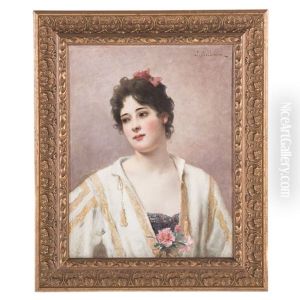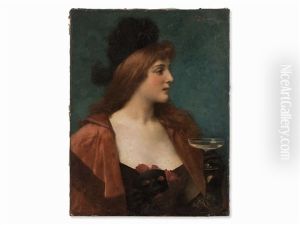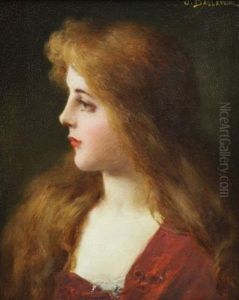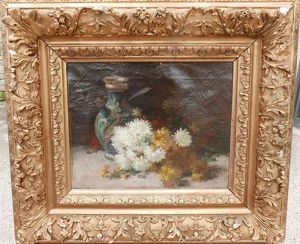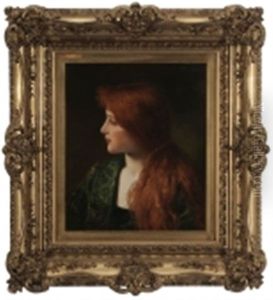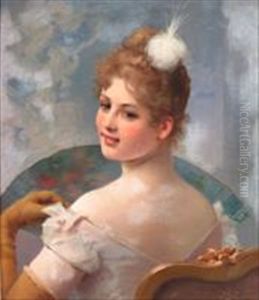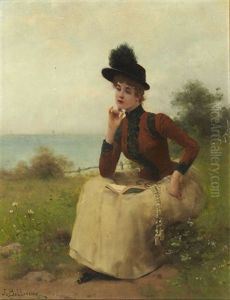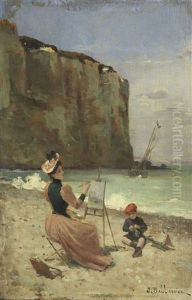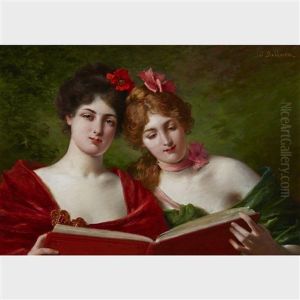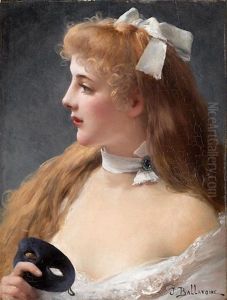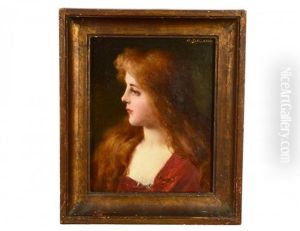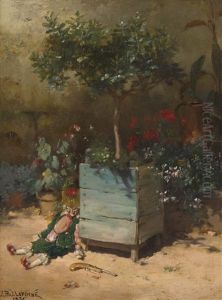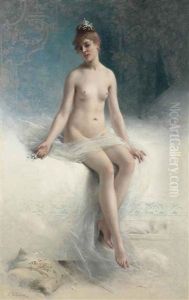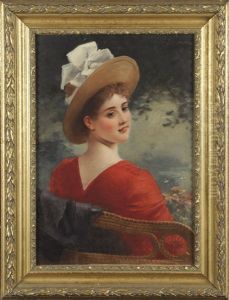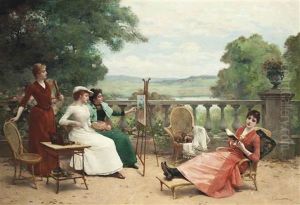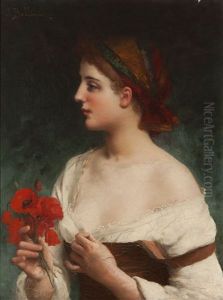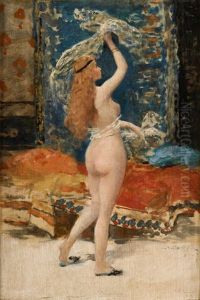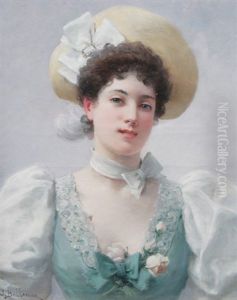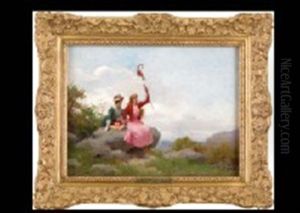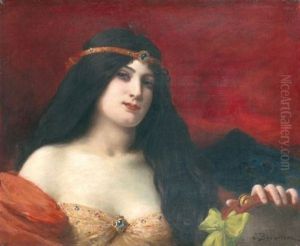Jules Frederic Ballavoine Paintings
Jules Frederic Ballavoine was a French painter born in Paris in 1855. Known for his genre scenes, portraits, and historical paintings, Ballavoine was a versatile artist who worked within the academic traditions of the 19th century. Although not as widely recognized as some of his contemporaries, he contributed to the rich tapestry of French painting during a period marked by a transition from traditional academic art to the early stages of modernism.
Ballavoine received his artistic training at the École des Beaux-Arts in Paris, where he studied under influential painters such as William Adolphe Bouguereau and Tony Robert-Fleury. These teachers played a significant role in shaping Ballavoine's style, which was characterized by a finely tuned attention to detail, a harmonious use of color, and an adherence to the refined techniques of the academic painting tradition.
During his career, Ballavoine exhibited his works at various salons, including the prestigious Salon de Paris, which was the official art exhibition of the Académie des Beaux-Arts. His participation in these exhibitions helped to establish his reputation as a skilled painter. Ballavoine's artworks often depicted scenes of everyday life, capturing moments of simplicity and elegance. His portraits showcased his ability to render the human figure with sensitivity and grace.
Despite his adherence to academic standards, Ballavoine's work also hinted at the changes that were to come in the art world. The latter part of the 19th century was a time of great experimentation, with artists such as the Impressionists breaking away from traditional methods to explore new techniques and perspectives. While Ballavoine remained largely within the academic realm, the quality and craftsmanship of his work continued to earn him respect among his peers.
Jules Frederic Ballavoine's life and career came to an early end when he passed away in 1901. Although his name may not be as familiar as some of the era's leading figures, his contributions to French art remain appreciated by those who study the period. His paintings can be found in several galleries and collections, offering a glimpse into the world of 19th-century French academic art and the subtleties of its transition towards modernism.
